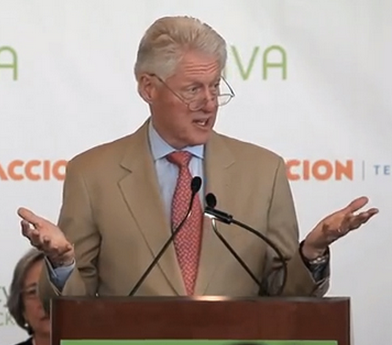Tag: public speaking
Tips for Public Speaking: How You Can Become Awesome at Presentations
Chris Anderson, the Ted founder said: When I think about compelling presentations, I think about taking an audience on a journey. A successful talk is a little miracle — people see the world differently afterward. Being awesome at public speaking can be one of the most fear-inducing parts of modern life. However, it also can be one of the most rewarding tasks you can do. Talking in front of an audience is
nothing to fear, so long as you are prepared with these tips for public speaking. This article will give you everything you need to plan, prepare, and deliver an awesome public speech.
Check out our thoughts on team leverage.
Be a master at grabbing and keeping his audience’s attention, which is the number one goal of any public speaker. And also any compelling speech. Take them on a journey by way of an interesting story or maybe several.
How do you do it, you say? Pay attention to these 10 key lessons from a rhetorical playbook. Follow them diligently and practice, practice, practice.
Let’s get started:
Tips for public speaking … speech title is critical
Match your topic to your objectives and audience interests. This will help capture the audience’s attention, raise expectations, and give you a specific focus. All are critical to your success.
And to achieve your goal, you must know your audience and do your research homework. Let what you learn the show in your speech.

Public speaking techniques … simplicity
You can keep it simple, even if you have mountains of research to report.
First, fine-tune your core message. Chisel away at your topic until you can reduce your presentation to a core message. Once you achieve this, all your ideas can march behind it.
This is as true for business presentations as it is for political campaigns. Consider Obama’s campaign speeches. He used his simple slogan to make us believe he was the politician for change — something so many Americans longed for — and he appealed to us to have faith (to believe) in the change he was offering us. He won people through a simple slogan, which then allowed him to more easily serve up his ideas about meaty topics.
Topic priorities
Be aware of the great line by Goethe, “Every word that is uttered evokes the idea of its opposite.” What this means is that when you express one view, the odds are high that people will reflexively think about other, unmentioned aspects of the topic.
A presentation that does not deal with this “evoking of opposites” loses the audience’s attention because it fails to address the questions and concerns that come up in people’s minds. So anticipate them. Show your audience that you understand the contrary view better than they do, and explain why your proposal or argument is still superior.
Make sure your points include things that are not obvious or known. Offer your unique opinions. Weave in proof points and examples. Then you can use the stories to help illustrate your points.
Public speaking tips and tricks … use down to earth speech
Chisel away at your speech wording until you can reduce your presentation to a core message. Once you achieve this, all your ideas can march behind it.
This is as true for business presentations as it is for political campaigns. Consider Obama’s campaign speeches. He used his simple slogan to make us believe he was the politician for change — something so many Americans longed for — and he appealed to us to have faith (to believe) in the change he was offering us.
He won people through a simple slogan, which then allowed him to more easily serve up his ideas about meaty topics.

Getting ready
Know your opening and closing statement COLD. Rehearse well. 3 hours prior to your speech, go for a short walk. Once on stage adapt the alpha pose to lower stress and increase your confidence.
Public speaking … taking the stage
The most important point to remember is to not rush at the start. Overlook the audience, smile, and pick out a few faces to concentrate on. Talk to these few faces and maintain good eye contact.
The delivery
Always use a wireless microform so that you can move around. Vary tone and inflections of your voice. Maintain good eye contact by picking specific people in the audience. Change them around every moment or so.
Master use of pauses
Well-planned pauses will do wonders for your speech. For example, Obama has mastered the art of pausing. He pauses to let us catch up with him. He pauses to let his words resonate. He pauses, in a sense, to let us rest. Pauses also give the impression of composure and thoughtfulness.
Where you pause is up to you; there are no hard and fast rules. Try it. Slowly inhale to the count of three at each breath mark. Speak as though you had plenty of time. The goal of this exercise is to teach your body to slow down.
Public speaking … making an impact
Ask a challenging question on your subject theme for a dramatic opening. Present the topic as a story if you can. Use an occasional short, witty quote. Also, use occasional repetition and pauses for attention on key points.
Memorable ending
As we have said, focus on one theme and eliminate everything else. One relevant message and several great stories to illustrate. Save your most memorable story for your ending. Hopefully, the one that is also most encompassing of your message.
Need some help in capturing more improvements for your staff’s leadership, teamwork, and collaboration?
When things are not what you want them to be, what’s most important is your next step.
Test. Learn. Improve. Repeat.
Are you devoting enough energy continually improving your continuous learning?
Do you have a lesson about making your learning better you can share with this community? Have any questions or comments to add in the section below?
Digital Spark Marketing will stretch your thinking and your ability to adapt to change. We also provide some fun and inspiration along the way.
More reading on learning from Digital Spark Marketing’s Library:
The Nine Most Valuable Secrets of Writing Effective Copy
How Good Is your Learning from Failure?
10 Extraordinary Ways for Learning to Learn
Continuous Learning Holds the Keys to Your Future Success
How to Improve Your Public Speaking
We’re a bunch of goal junkies at Digital Spark Marketing but we’re realists in that we can only focus on so many goals. For 2022, we’d like to challenge our clients, readers, and friends on becoming the best public speaking presenters they can be. Instead of creating a long list of resolutions for 2022, we narrowed our focus to just four.
Here are the four public speaking goals we recommend every presenter should make:
Rehearse a minimum of 3 times before you deliver your presentation:
When rehearsing your presentation, rehearse in front of an audience or in front of a camera to watch yourself.
Criteria to judge yourself on include:
- Body Language – Are you doing anything that is distracting to the audience? Are you able to keep your legs positioned shoulder-width, arms open, and hands moving with a smile?
- Purpose– If you were in the audience’s shoes, is it easy to watch yourself and understand what you are asking for?
- Jargon – Are you using words or acronyms that can be confusing to the audience?
- Pace– Are you speaking too fast where it’s hard to understand? Can you pause at certain points to help emphasize points?
- Flow– Do you tend to ramble and go on a tangent in certain parts of your presentation?
- Reliability: Can you present this presentation without a presentation? If AV ever crashes on you, will you be ready?
Simplify your points and data:
- It’s very important to deliver stats that are relatable to the audience. The example we love to use is when Steve Jobs stated, “The Apple iPod has 10GB and that’s 2,000 songs.” This is a basic example of how data should be delivered. Presenters should consider their audience’s needs, and deliver the stats in a way the average person can apply the information. This will help the audience consume the data points in a more impactful way.
- Showcasing a compare and contrast stat such as, “In 2015, the top performing trailers from each nominee have collectively been watched over 200 million minutes on YouTube —that’s over 3.3 million hours, or the equivalent of nearly a million Oscar telecasts.”
- Or a decreasing value size vs. an increasing value size such as “This will cost 4 trillion dollars to execute, or 11 billion dollars a day.” This provides association points to showcase the scope of the number.
- Bonus takeaway:When a presentation requires you to showcase a lot of data on slides, organize your slides to ONE graph to be the main focus per slide. You can either break down the chart-heavy graphs into multiple slides or feature a transition that can unveil graphs as you talk about it through clicks.
Create powerful calls to action:
Segment your points into a structure an audience can follow along with while also including a call to action that can move the audience. Without a call to action, there is no strong action the audience feels that they need to take. There are three different types of calls to action that include: the ask, question, or demand.
Always, always create a Big Idea for a presentation:
Before even considering design or delivery rehearsal, always establish a big idea for your presentation. A big idea is the central argument or theme of your entire presentation. It should be something that others really care about. Encourage your team to be able to state their big idea in concrete, but simplistic terms. You can read more about building big ideas for presentations here.
In order to create great presentations, it obviously takes practice. You know that. However, organize the above points into a process that you can easily adapt into habits. For example, why don’t you create a checklist you always follow before you give a presentation?
The bottom line
My presentation is ready to be delivered when:
- I can deliver my presentation without the slideshow
- I have rehearsed a minimum of three times
- I can simplify any data point in the presentation that may be confusing into something simple and relatable to the audience
- I know exactly what I am looking for my audience to do through my call to action
- I know exactly in one sentence the main argument I’d like my audience to remember about my presentation.
While it doesn’t have to look exactly like the above checklist, having a great mental note or print out near your desk right before your next presentation can make a world of difference.

